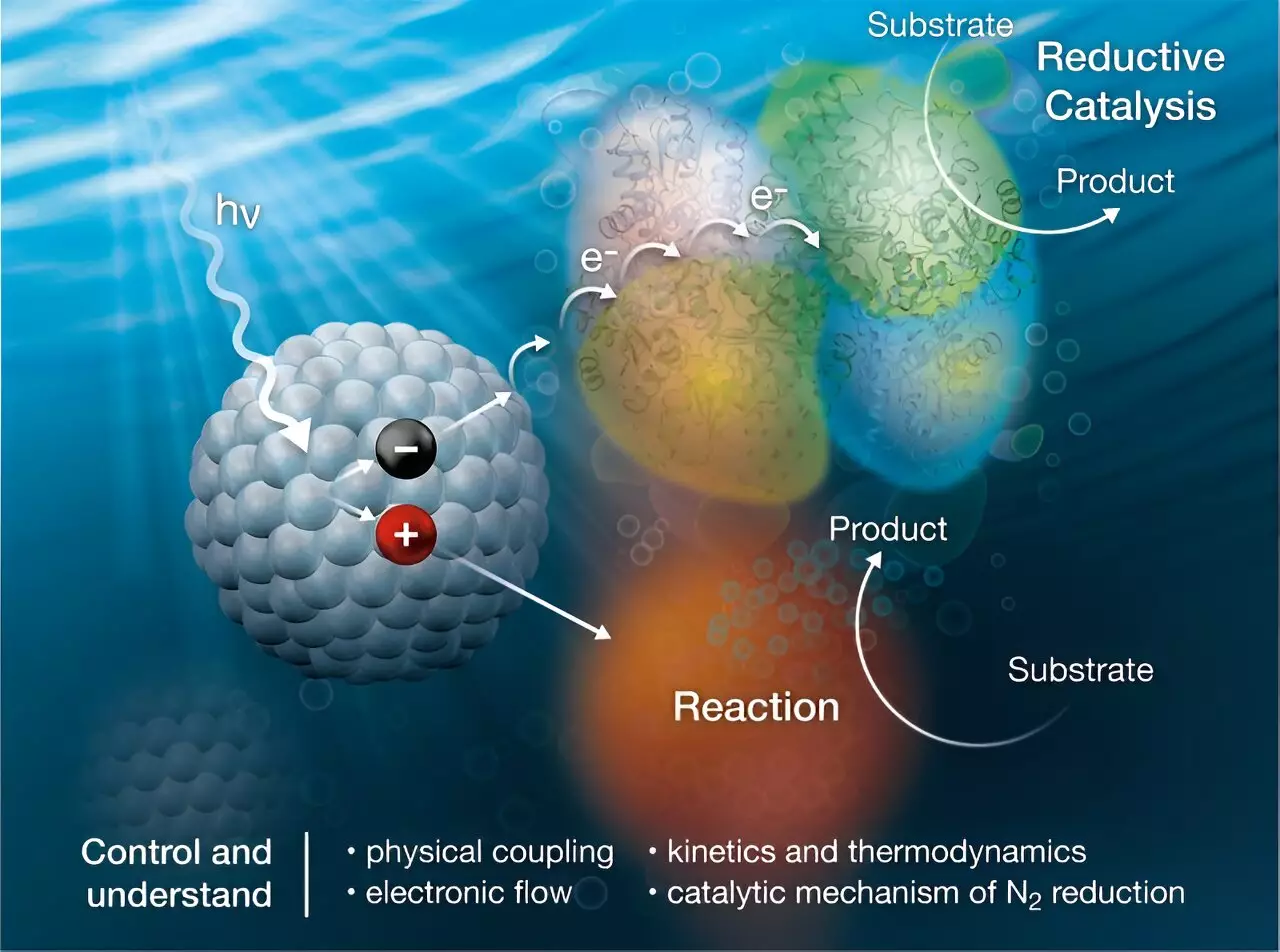The Earth’s atmosphere is rich in nitrogen in the form of dinitrogen gas (N2), which is crucial for the production of ammonia (NH3) used in fertilizers for agriculture. Currently, the process of converting N2 to NH3 for ammonia production consumes 2% of the global energy and results in significant greenhouse gas emissions.
Traditional methods of ammonia production, such as the Haber-Bosch process, are energy-intensive and generate large amounts of carbon dioxide (CO2). Approximately 150 million metric tons (MmT) of ammonia are produced each year using this method, resulting in about 280 MmT of CO2 emissions. This has a detrimental impact on the environment and contributes to climate change.
In a recent study published in the Journal of the American Chemical Society, researchers have come up with a novel approach to ammonia production using sunlight energy instead of ATP. By developing a biohybrid system that combines nanocrystals with the nitrogenase enzyme, they were able to catalyze the conversion of N2 to NH3 using sunlight energy. This approach not only reduces energy consumption but also eliminates the production of greenhouse gases.
The use of sunlight to drive the ammonia production process has several advantages. It offers a low-energy alternative to traditional methods, reduces greenhouse gas emissions, and allows for the production of NH3 fertilizers closer to the point of use, thereby minimizing CO2 emissions from transportation.
The key to the success of this innovative approach lies in the development of a biohybrid system that combines nanocrystals with the nitrogenase enzyme. By studying the properties of nanocrystals for binding to the enzyme, researchers gained valuable insights into the complex NH3 production reaction. The nanocrystals use sunlight to transfer charge to the enzyme, driving the conversion reaction without the need for ATP.
Further research is needed to optimize the biohybrid system for efficient NH3 production using sunlight. By understanding how to chemically modify nanocrystals to bind enzymes and transfer charge selectively, researchers can improve the efficiency of the process. Techniques such as electron paramagnetic resonance spectroscopy can be used to analyze reaction intermediates and develop a kinetic model of the N2 reduction reaction.
The future of ammonia production lies in sustainable and environmentally friendly processes that harness the power of sunlight. By developing innovative biohybrid systems that combine nanocrystals with enzymes, researchers are paving the way for a greener and more efficient method of NH3 production.


Leave a Reply